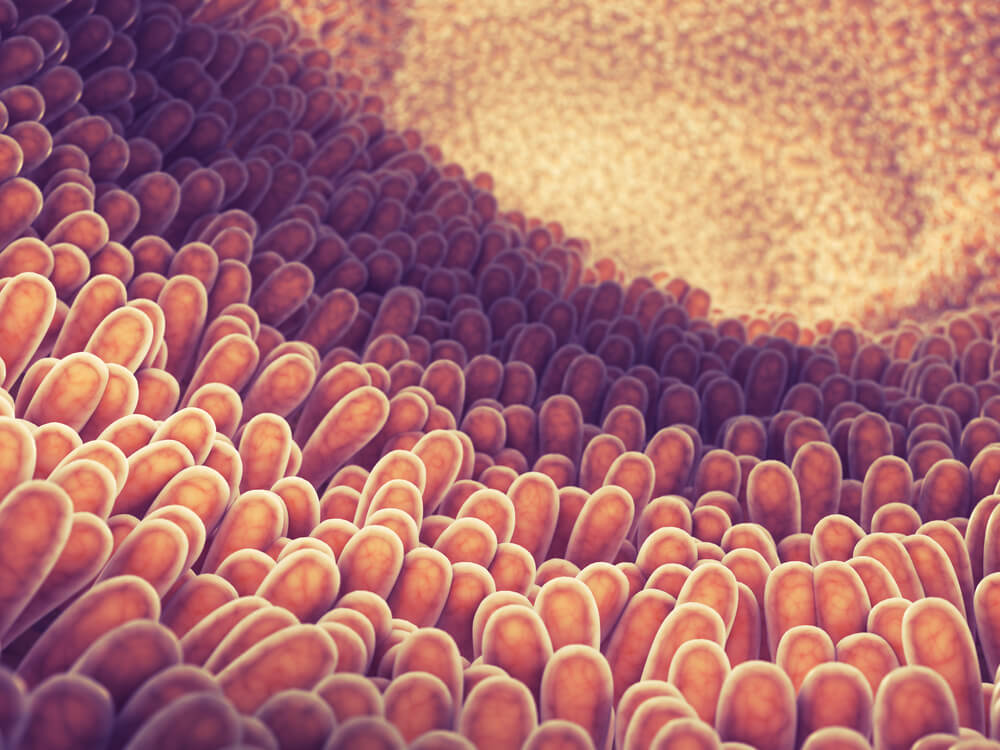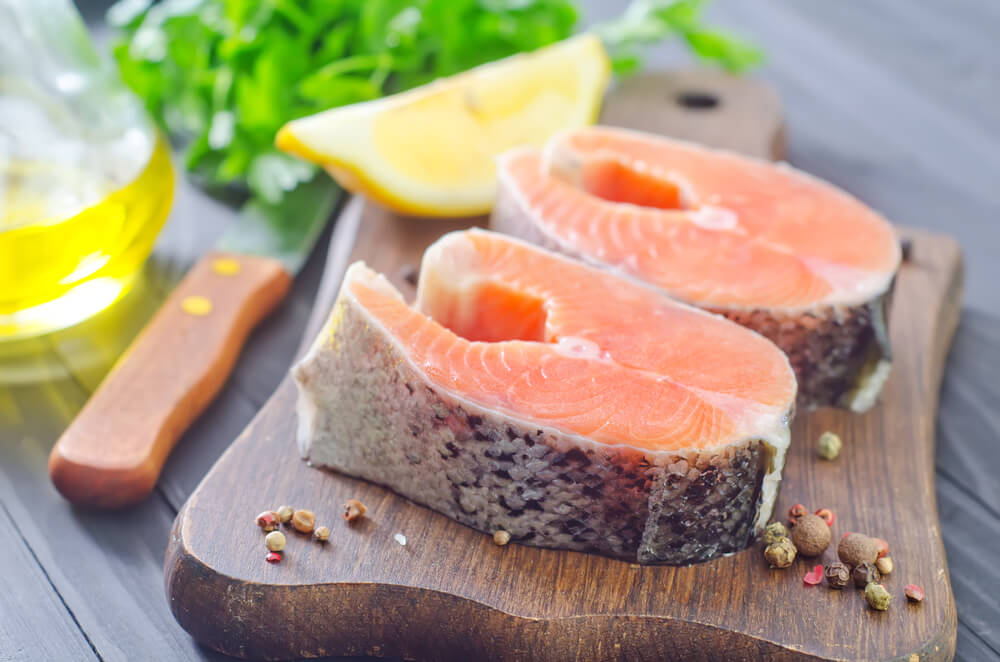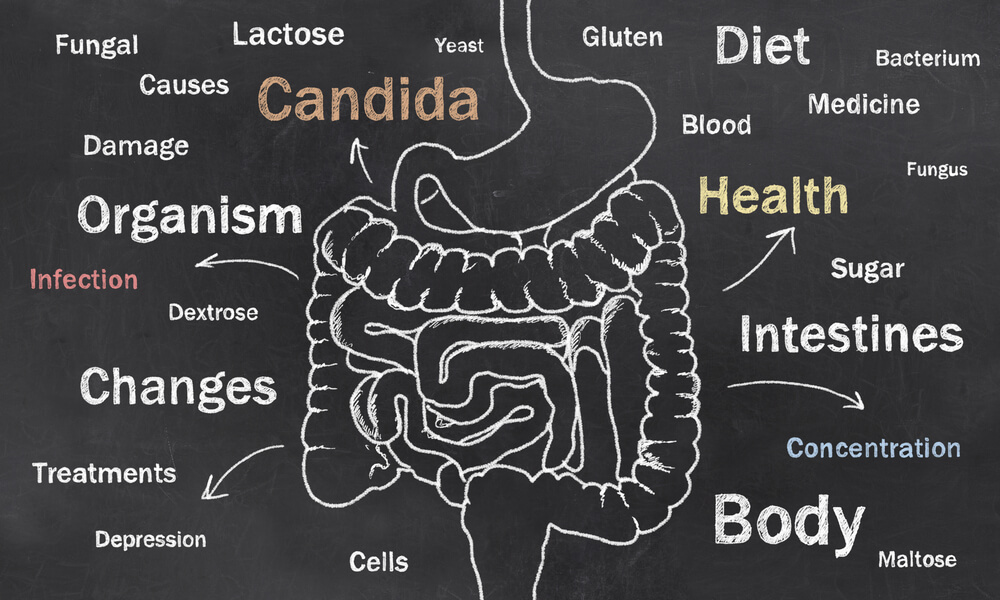
You’ve heard about it. But, what do you know about it? If you’re like most, you likely don’t know much about the Candida diet. Don’t worry. We break it all down for you right here.
Believe it or not, your body’s health rests largely on the health of trillions of invisible organisms. We’re talking, of course, about what lives in your gut.
You’ve likely seen mentions of Candida diets and cleanses and maybe wondered, what is Candida?
I know what you are thinking there are tons of diets like the military diet, gm diet, grapefruit diet, and even crazy crash diets.
You may have pondered is it worth paying attention to, or is it simply the next diet trend?
Let’s break down the facts about these bacteria, and take a look at how a balanced gut might be a breakthrough for your health and well-being.
This Is Your Gut
Though you can’t see or detect them, as you go through your day more than 100 trillion bacteria coexists along with you in your gut. In other words, our bodies contain more bacteria than they do human cells. They may be invisible, but when this balance on the inside flourishes, so does our health. When it’s thrown off or disrupted in any way, the results are a laundry list of ailments and symptoms.
These symptoms range from digestive woes, yeast infections, brain fogginess and memory trouble, acne and other skin trouble like rashes or eczema, to weight gain, autoimmune diseases, and fatigue. These invisible-to-the-naked-eye colonies hugely influence your overall health, but certain conditions can make the balance less than ideal. It’s in cases like these when diets and programs like the Candida diet can make a world of difference.

Candida Overgrowth
One major colony taking up a spot in your gut is the pathogen known as Candida albicans. On its own, and under ideal health conditions, it’s commonly completely harmless. In fact, around 70% of us typically have a colony of Candida albicans. It is one of the most common yeasts inside of us, as part of the symphony of trillions of other gut bacteria and colonies.
When all is well in our bodies, this fungus causes no damage on its own. But, when your body’s carefully calculated system is thrown off due to a host of outside factors, an overgrown Candida can occur as one part of a larger gut imbalance, wreaking havoc on your health.
What Causes An Candida Overgrowth?
A host of factors can influence the balance of your gut. Any time you add certain medications, stressors or even foods into your system, you have to realize you could be causing an internal shift that will have a noticeable impact on your health.
The balance of your gut health is a prime example of this give-and-take cycle at play. When outside influences enter your body, the result can often be an off-balance gut. Once this happens, the microbiome of your gut is weakened, and the stage is set for bad bacteria to overtake the balance, decreasing the good bacteria that you need.
A few key factors are the usual suspects that trigger an overgrowth of Candida in your system. Some people are inherently more at risk due to underlying causes like autoimmune diseases. Chronic antibiotic users are likely to experience an overgrowth as well. Those with diabetes weakened immune systems from other diseases or conditions or metabolic syndrome also tend to be more prone to Candida infections and overgrowth.
But, aside from underlying conditions that boost your odds, many lifestyle and diet changes can come into play. Consuming a diet high in sugar is a major precursor to developing an out-of-whack gut. The same holds true for living with constant stress. It could easily contribute to the issue if left unchecked for long periods.
What Can You Do About It?
The goods news is that your own dietary choices have ample influence over your gut health. Enter, the Candida diet. Whether you’ve considered it, had it recommended to you by a doctor or simply keep seeing it mentioned on the web, there are things you need to know to make an informed decision on whether it’s right for you.
The star of the anti-Candida scene is the program by digestive health expert and author Lisa Richards, simply called “The Candida Diet.” Though anti-Candida diets have been around since at least the 1980s, if you’ve heard the diet mentioned in recent years, it’s most likely this one.

Candida Diet Recipes & Eating
When it comes to beating a Candida overgrowth and balancing your gut, some foods should become staples of your diet. What follows are a few food categories you’ll want to be consuming.
Non-starchy vegetables: Preferably enjoyed steamed, raw or grilled, these veggies have low sugar content so they’re ideal for the plan. Reach for options like artichokes, asparagus, cabbage, spinach, zucchini and kale.
Live yogurt cultures: Live cultures are vital to restock the beneficial bacteria in your gut. When you wipe out the bad, such as after a round of antibiotics, you need to make sure you’re replacing them with the good. Eat yogurt and kefir.
Fish: Go for types of fish that have low toxin levels.
Which ones are best?
Try herring, sardines and wild salmon.
Nuts and seeds: Almonds, flax, pecans, walnuts and others are all welcome in your diet.
Non-glutinous grains: Gluten is to be avoided on the plan. Instead, reach for high-fiber options like millet, oat bran, quinoa, and buckwheat.
Herbs and spices: Enjoy as many as you’d like of spices such as basil, pepper, cinnamon, turmeric and others.
Oils: Enjoy cold-pressed oils like coconut, extra virgin olive or flax, which maintain many more of the nutrients and beneficial qualities.
Seasonings: Spice up your meals with sea salt, lemon juice, aminos, apple cider vinegar or other natural flavor boosters.
Beverages: Teas deliver a host of benefits. When you ditch the soda and any other artificial drinks, switch to tea.
What kinds?
Enjoy cinnamon, peppermint and ginger.

Here’s What You Should Avoid
Don’t forget: The key is to avoid any foods that provide a direct boost to bacteria by giving it the sugar it needs to thrive. You’ll want to steer clear of the following foods for the best results.
Sugars: This should come as a no-brainer. Ditch everything from plain sugar to honey, syrup, molasses and artificial sweeteners to keep the Candida at bay.
Alcohol: Along with running your general gut health down and weakening your immune system, alcohol tends to be packed with hidden sugars. That’s why you should avoid wine, beer, liquors, and ciders.
Grains and gluten: Even if you’re not typically gluten free, gluten tends to negatively affect those who suffer from Candida. Give your body a rest from it by steering clear of anything with wheat, rye, non-gluten-free oats or barley.
Fruits: While advised in most diets even simple diet plans, fruits are high enough in sugar that they’re best avoided while restoring your gut health. Stay away from fresh, dried, canned or juices.
Vegetables: Select veggies are also off limits.
Which ones?
Potatoes, carrots, yams, beets, peas and parsnips top the list.
Meats and fish: If they don’t fall under the list of approved fish, avoid them. Stay away from all pork products. Also stay away from cured or processed meats loaded with harmful additives.
Dairy: Aside from yogurt or kefir, you’ll want to remove from your diet all dairy products like milk, cheese, and whey products. Sorry muscle guys!
Additives and preservatives: Since the main goal of the diet is to restore your body’s system to a natural, optimal state, you need to be smart. Avoid stuff you can’t pronounce or aren’t familiar with.
Why?
It can throw off your body’s natural rhythm.
Drinks: You can enjoy the herbal teas we’ve listed. With that said, you should say no to caffeine while restoring your gut.
Why?
It can cause a hike in blood sugar and weaken the adrenals and immune system.
What else?
Coffee, black and green teas, sodas, energy drinks and fruit juices should be cut out.
Nuts: A little-known fact is that cashews, peanuts, and pistachios all have high amounts of mold. This will only worsen an existing Candida issue.
Beans: Particularly in the early phases of the diet, anything high-carb is a no-no. Like what? Avoid beans and legumes, including any soy products(unless it’s non-GMO) like tofu.
Mushrooms/molds: Consuming fungus typically goes against attempts to reduce an overgrowth of fungus in your body. Unless it’s the Reishi or Maitake types of mushrooms, which actually boost the immune system, stay away from mushrooms and truffles.
Condiments: Sugars lurk in most of our processed foods. Stuff like ketchup, mayo, relish and mustard are typically loaded. Use simple options like lemon juice and aminos instead.
Vinegar: White and red vinegars can make the inflammation in your gut worse. The only vinegar that will help you during this time is apple cider vinegar.
Fats and oils: Peanut, corn, canola and soy can all have mold. Stick to the better options we listed before.
What About Supplements?
Another key piece of the anti-Candida diet is supplementing your body with both oral probiotics and antifungal. These two working in tandem will break down the Candida cells while also boosting the presence of good bacteria. These are usually wiped out from a round of antibiotics or an overgrowth of Candida.
Popular antifungal options are caprylic acid, grapefruit seed extract, garlic and oil of oregano. Probiotics can be taken in pill form and also exist in kefir and yogurt.

The Candida Diet
The cleansing phase: The Candida diet is broken down into strategic steps to first cleanse and then replenish your body. For best results, you can begin with a cleansing phase. This is optional.
The Phases Of The Diet
If you choose to follow it, you’ll be flushing your system with raw salads and simple steamed veggies. This will give your body a refresh. It will leave you feeling light and cleansed. Then you can move onto the first official, mandatory phase of the plan.
The anti-Candida phase: When the diet begins, the number one priority is ridding your pantry of the foods to avoid and getting into a routine of eating the gut health boosting foods, all of which are designed to halt the Candida’s growth. This phase can last a few weeks to months, depending on other factors like the severity of the infection and how well other elements of the diet are working.
Reintroduction phase: Once your baseline gut health is restored, the diet allows you to reintroduce, slowly and carefully, foods like low-sugar fruits and veggies. Take notice of anything that spikes another Candida flare up. It’s been said that while many can bring foods back into their normal diet, a total return to the way of eating pre-Candida, is likely unwise.
Why?
If you’ve suffered from Candida once before, it’s likely that a total return to your old ways of eating will cause another bout.
These Are The Pros And Cons Of The Diet
While healing your gut and balancing your body’s bacteria can truly lessen a long list of symptoms and relieve suffering for many, the Candida diet is not an end all be all for everyone. As with any diet, your specific needs have to be taken into consideration.
Many have called the diet plan too generalized. They’ve noted that foods that benefit some will harm others, and vice versa. Anything from environmental factors, genetics, and differing activity levels will mean that a plan suited for one person will affect the next in a different way.
Another common mistake is assuming that the plan will heal gut-related problems almost overnight. The truth is the process will be riddled with trial and error experiments to find what works for you over the long haul. Balancing your gut is just that – a balancing act. Don’t rush into a new diet without thinking about the big picture of your health. Don’t expect to see the exact results in your body that others have gotten.
Everyone’s health really is that different.
Conclusion
At the end of the day, 70% of people suffer from some type of Candida issue. Taking steps to correct it through diet and nutrition can help a great deal. It’s your best bet to healing your issues from the inside out in a natural and sustainable way.
Like with any diet, consult with your doctor and consider your specific issues before changing up the way you eat. Last but not least, give your body the time and patience it deserves to see lasting results.
By Emmy Schneider-Green
Latest posts by Terry M (see all)
- Garage Gyms - Aug 1, 2018
- Kettlebells – Why They Should Be Added To Your Routine. - Jul 24, 2018
- Weight Belts: What Are They Really For? - May 31, 2018










